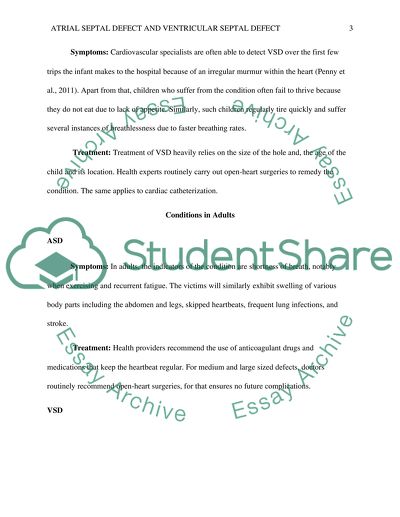ATRIAL SEPTAL DEFECT (ASD) AND VENTRICULAR SEPTAL DEFECT (VSD) Assignment. Retrieved from https://studentshare.org/nursing/1678412-atrial-septal-defect-asd-and-ventricular-septal-defect-vsd
ATRIAL SEPTAL DEFECT (ASD) AND VENTRICULAR SEPTAL DEFECT (VSD) Assignment. https://studentshare.org/nursing/1678412-atrial-septal-defect-asd-and-ventricular-septal-defect-vsd.


